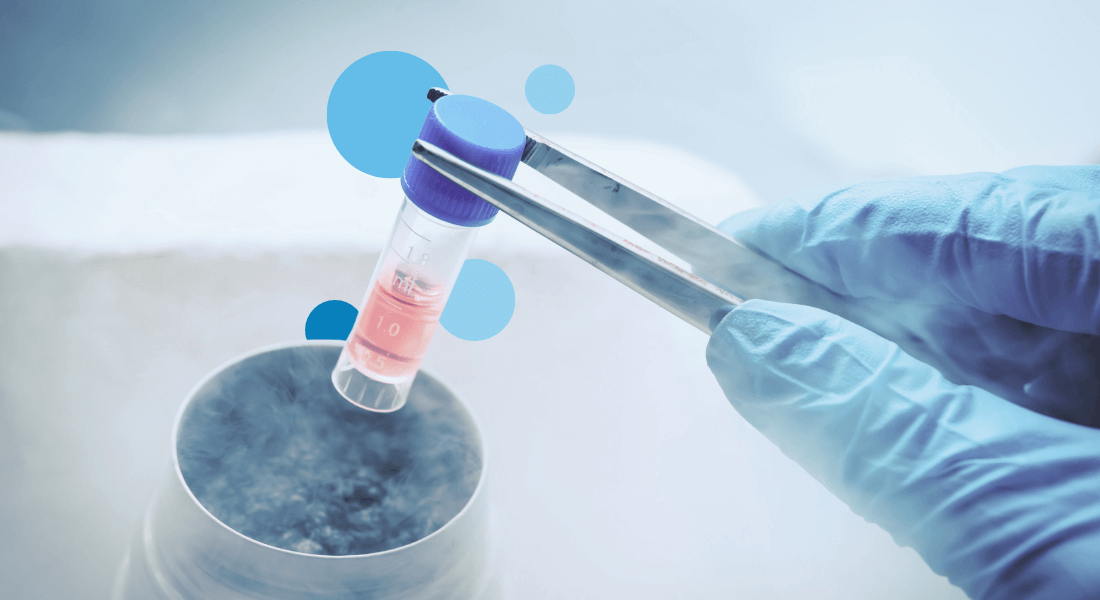Researchers create ‘super stem cells’, seeing potential for improved fertility treatment
The ‘super stem cells’ perform better than regular stem cells, being able to develop into many different cell types, researchers from the University of Copenhagen find, with many potential applications, including improved IVF treatment.

Imagine if reducing your caloric intake could make you younger? This is almost the case with stem cells.
In a new study, researchers from the University of Copenhagen have successfully created stem cells that are better at developing into other cell types, like a younger, fitter version of themselves – by changing their diet. These stem cells are better than normal stem cells at creating specialized cells like liver, skin or nerve cells, which is a core trait of stem cells.
“We show that by changing their diet, the stem cells can rejuvenate and turn into ‘super stem cells’. It forces them to metabolize their energy in a different way than they normally would, and that process essentially reprograms the stem cells. The net result is that they behave like they are from an earlier stage of development, which enhances their ability to develop, or differentiate, into other types of cells,” says first author Robert Bone, Assistant Professor at the Novo Nordisk Foundation Center for Stem Cell Medicine, also known as reNEW.
Specifically, the researchers changed what type of sugar the stem cells have available in the medium they grow in. The cells use the sugar to generate energy.
“What is really striking is that they’re not just better at differentiating, but they stay fit and keep healthy much better over time compared to stem cells in standard culture conditions. And it is done with a relatively simple method,” says corresponding author Joshua Brickman, Professor at reNEW.
Could improve fertility treatment
There are a many potential future usages of ‘super stem cells’, Joshua Brickman points out:
“Given that we now have a simple means to rejuvenate cells, we want to investigate how this trick could work on a variety of cell types. For example, can we use this diet to revitalize liver or heart cells and use them to treat patients with congestive heart failure or liver cirrhosis? Perhaps we could use this trick to regenerate aging cells and treat diseases such as Parkinson’s disease, osteoporosis or diabetes.”
One area the researchers are interested in is fertility treatment, specifically IVF. It turns out that the ‘super stem cells’ are good at producing a certain type of tissue that forms during early embryonic development and which is important for successful IVF treatment.
“One of the things that the ‘super stem cells’ seem to be better at making is a cell lineage that becomes something called the yolk sac. Previous research has found that the formation of yolk sac in embryos cultured in a dish is very important for their ability to implant and become successful pregnancies,” says Robert Bone.
“We hope to improve IVF technology by developing a culture for IVF that uses the same metabolic process. Hopefully, it can be used as part of the embryo culture regime that they use in the clinic to improve success rates of implantation,” Joshua Brickman adds.
Read the study “Altering metabolism programs cell identity via NAD+-dependent deacetylation”.
In this study, researchers have created a new culture medium for embryonic stem cells (ESCs) from mice. Simply put, they replaced a type of sugar in the culture known as glucose with a different sugar, galactose. This change of “diet” blocks normal glucose metabolism and restricts the cells’ source of energy to a metabolic process known as oxidative phosphorylation.
By changing their nutrient source, the ESCs are reprogrammed into an earlier stage of development which enhances their ability to differentiate into other types of cells.
The researchers found that a specific signaling protein known to regulate aging in cells was activated by the change in sugar metabolism. This in turn made other key proteins bind to DNA better.
The net result of the new metabolic process is that the DNA is more densely “packed” in areas with redundant genetic information and not in areas with important, relevant instructions. This both turns down the volume of irrelevant information and amplifies the directly relevant information.
This improved ‘signal-to-noise ratio’ causes the stem cells to have a better understanding of what they should do and behave like they are from an earlier developmental stage, performing better as stem cells.
A deterioration of the ‘signal-to-noise ratio’ is also behind certain features of aging, the researchers found: It is almost like taking your grandparents to a crowded restaurant, and they can’t hear for two reasons: You aren’t speaking loud enough, and they can’t filter out the background noise. Aging stem cells may have the same problem listening to their own genomes.
Source: Professor Joshua Brickman, reNEW
Contact
Professor Joshua Brickman
+45 20 34 07 50
joshua.brickman@sund.ku.dk
Communications Adviser William Brøns Petersen
+45 93 56 55 80
william.petersen@adm.ku.dk
